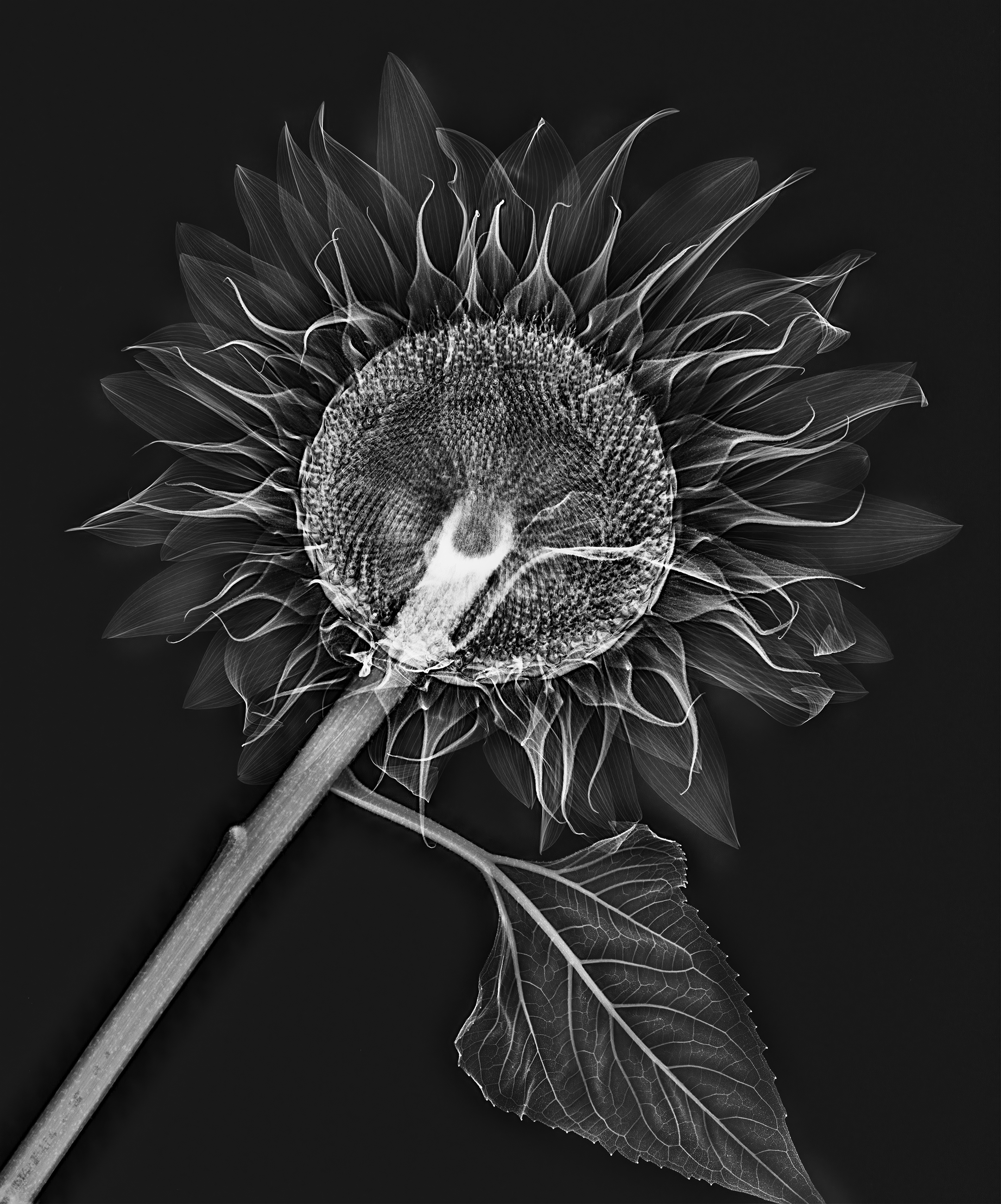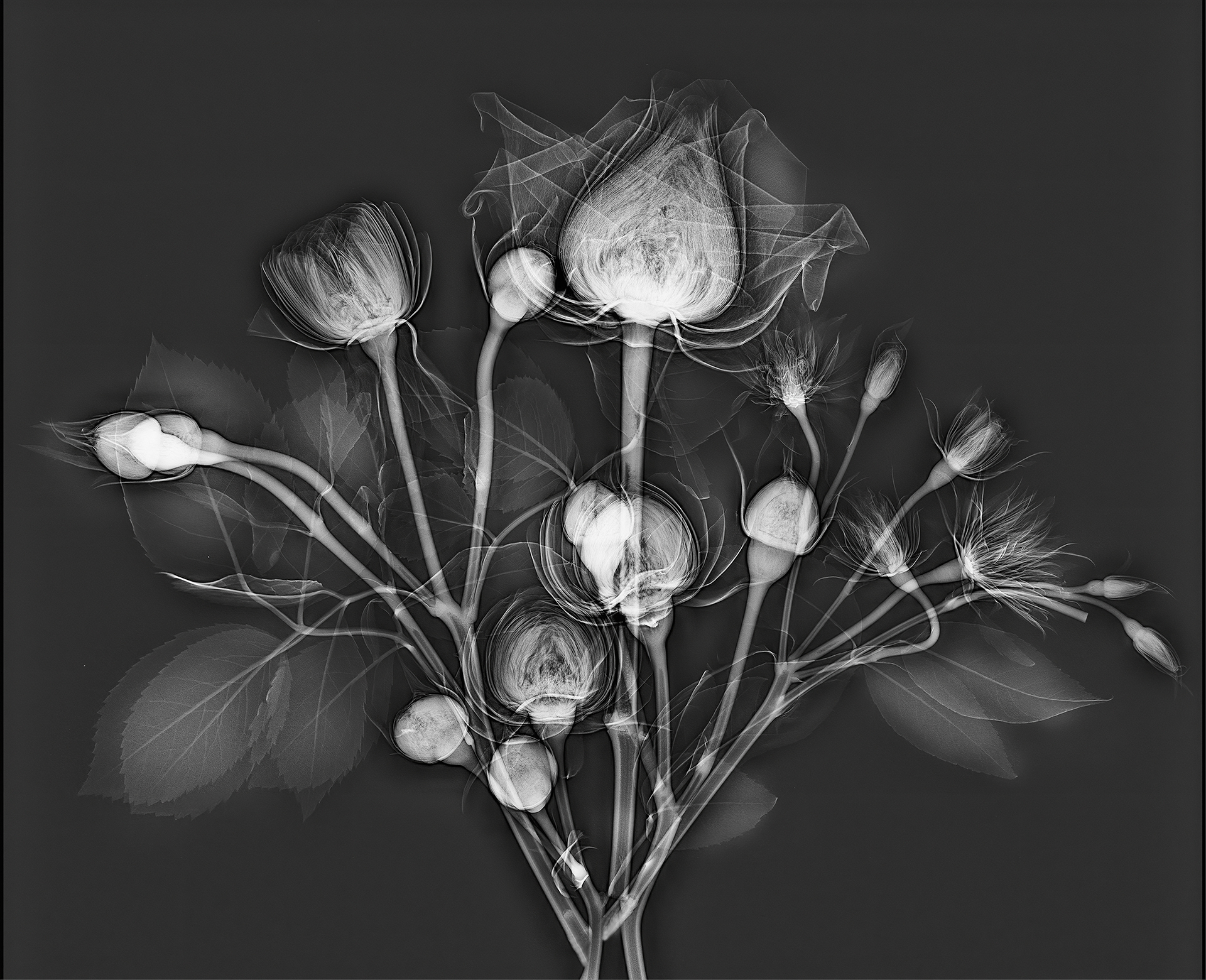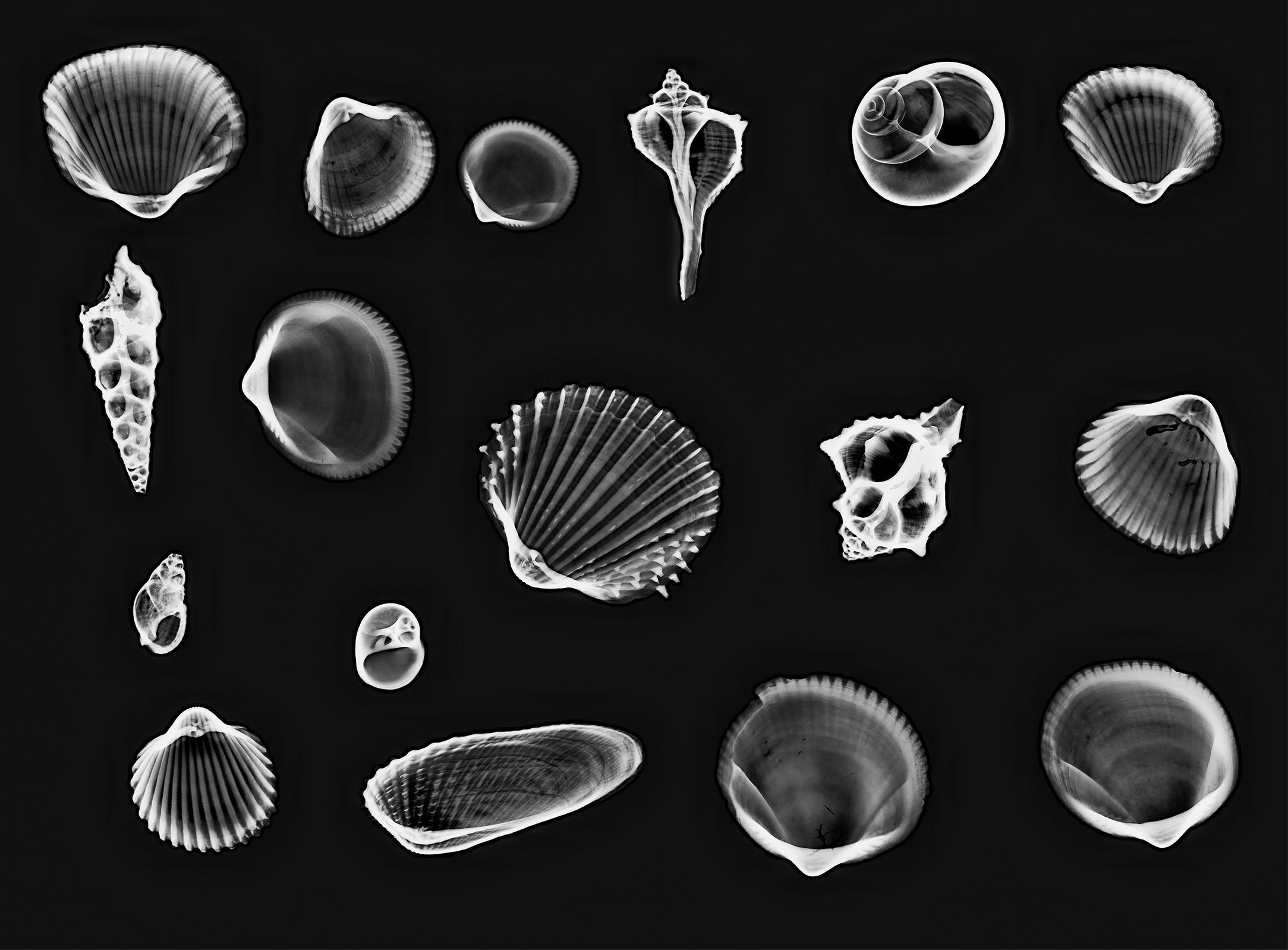The process of making these x-ray images of flowers and shells is more like making a photogram—what Man Ray called a rayograph—than it is like using a conventional camera. The flowers are arranged on top of the capture medium, in this case a digital sensor and then exposed. But the exposure is to x-rays rather then to light in the visible spectrum, as in a photogram, where objects are placed on top of a photosensitive medium (historically, more oftern emulsion-coated paper rather than a digital sensor).

The x-rays reveal the inner form and shapes rather than the surface manifestation of the object. It is possible to look at the petals of a flower as though they are gauze or veils, and to see the capillaries within a leaf.

Rather than the surface of a shell, when the x-ray “camera” is pointed at a shell, the inner spirals, shapes, and forms of the structure is revealed.

More: Revealing the Unseen with X-Ray Photography of Flowers. Sometimes the seen and the unseen, the surface and the shapes within, come together by combining high-key visible light photography with x-ray captures: X-Ray and “Fusion” X-Ray Images of Flowers.